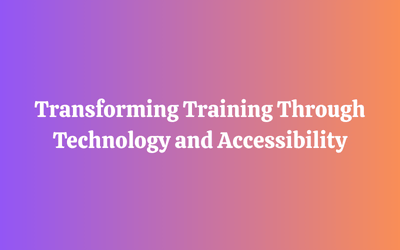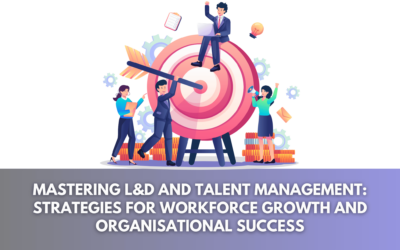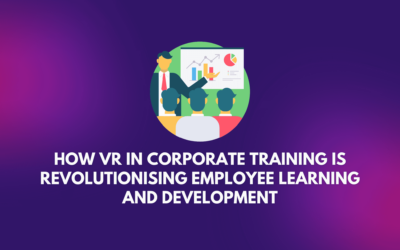How to Create a Content Strategy for Learning and Development
How to Create a Content Strategy for Learning and Development
Strategizing, curating, and managing content may seem tedious and time-consuming to a learning and development professional. Yet content is a crucial component of learning and growth that cannot be disregarded.
Not only in marketing but also in learning and development, content is king. Engaging material may draw viewers in and increase staff productivity. If properly planned, content has the potential to enhance labor capabilities and provide higher “ROI.”
The production, execution, curation, management, and enrichment of the material can all be positively impacted by a clearly defined content strategy. As a result, content strategy has been ranked as the top L&D priority for 2022 by many firms. If the content strategy has slipped your mind, now is the moment to pay attention before it compromises the return on learning.
What is a learning content strategy?
A content strategy is high-level planning that aids in creating a roadmap for enhancing learner engagement and relevance. Professionals in learning and development (L&D) who have a plan may stay on course and offer high-impact learning.
Designing and defining a content structure aids in identifying the pertinent content that quickly up- and down-skills personnel. Making decisions on what type of content is necessary, when it is necessary, what should be included, and what should be avoided, becomes simpler.
Why is an L&D content strategy important?
When the training programs’ content doesn’t reflect the tastes of the learners, adoption is frequently low, which eventually has an impact on the learning ROI. You may steer your material in a direction that the learners want and strengthen staff capabilities with an efficient content strategy. By content planning, you can simply manage the quality, efficacy, delivery, relevancy, and length of your material.
Content planning is crucial since it enables you to do the following:
- Speed up the productivity process.
- Go further to discover worthwhile information.
- Provide content where it is needed.
- Link the learning process to concrete skills or requirements.
- Save time, energy, and money.
- Create a culture where learning is ongoing.
- Sync content with organizational objectives to boost the commercial effect.
- Adapt content to the needs of learners.
- Provide workers the resources they require to expand their skill set.
- Make a repeatable, measurable procedure that can be improved.
4 steps to create a content strategy for learning and development
Developing a content strategy that guarantees effective results is one of the finest methods to keep staff members interested in L&D. Here are 4 simple actions you can take to develop a successful learning content strategy:
Step 1 – Then, determine what is required for L&D content.
Setting specific goals and KPIs and identifying the abilities required for each function in the organization is crucial for comprehending the content requirements. This will make it easier to establish a standard by which to gauge how successful the information is.
Employees’ performance should also be measured regularly to determine their development potential. One-to-one meetings can help understand the employees’ learning needs to tailor content to their unique requirements. The managers work closely with the employees; it is important to reach out to them to understand which type of content will benefit their team.
Step 2: Planning the Content How will the content journey be mapped out?
An effective L&D program’s cornerstone is content planning. To cover the gap between present and required skills, a content plan should be created when the requirement is obtained.
Here are some methods for outlining the content journey:
- Determine the intended audience.
- To make sure the content is in line with the business objectives, identify them.
- Work together with the senior management to determine the targeted return on investment from the training initiatives.
- The L&D budget for content development should be determined.
- Make a list of the talents that each target group needs.
- Build a user profile for the employee that includes their title, any skill gaps, the team they are a part of, and the areas where they need to improve.
- Set measurable course objectives.
- Create and develop visions for the course design.
- Identify the resources required to create compelling content.
- Make a wireframe and prioritize your learning needs.
- Determine whether L&D needs to concentrate on self-directed learning, compliance training, or individualized learning.
- A central repository for all of your content can be created using learning systems like LMS or LXP.
Step 3: Curation and Development of Content How will you create L&D material?
Choosing whether you will develop the L&D content or curate it is an essential component of content strategy.
These are some things to think about when writing content:
- Choose a format. Choose whether you’ll produce blogs, podcasts, ebooks, videos, or a learning journey using a variety of content formats.
- Using examples and graphics can help increase content engagement.
- Verify that the material supports the learning objective.
- Provide a brief introduction to the lessons the staff will study at the outset.
- Describe how the staff can put what they learn to use at work.
- Make contact with subject-matter experts to get pertinent information.
- Look into any learning and development resources that are already available that can make the process of creating content easier.
- Make sure the resources provide the knowledge the staff needs to advance their skills.
- Stay away from jargon-filled terms that the students might find confusing.
- Provide examples to the student to help them along.
- Make sure the challenges and solutions are stated in the article clearly.
- Make a narrative flow for your course material.
- Make sure the flashcard is visually engaging if you are concentrating on mobile learning.
- Make sure the main idea is communicated through bite-sized content if you are concentrating on microlearning.
- To pique the learner’s interest, put quality first.
- Make sure the language is one that your students can grasp.
Think about the following ideas if you are curating content:
- Look for and gather information from many sources.
- Be sure to pay attention to influential bloggers, podcasters, online media outlets, etc.
- Compile all the YouTube videos, TED Talks, and website connections.
- Avoid the one size fits all philosophy.
- Sort the pertinent information based on the various user profiles.
- Improve the content’s logic and organization by streamlining it.
- Manage timeline-based collections of data.
- Be sure to strike the ideal balance between quantity and quality.
- Refrain from information overload.
- Merge elements of handpicked material using the mashup technique to offer a fresh viewpoint.
- assemble the facts into a single, well-rounded course.
- Add comments, tags, or elaborative notes to the curated content to improve it.
- Before sharing or reusing content, make sure you have permission.
- Make sure the learning platform you choose integrates with different content suppliers.
Step 4 – Deliver Content – How will your content reach your learners?
Another crucial component of content strategy is deciding how to provide content. There are several ways to distribute content, including emails, PowerPoint presentations, and live webinars.
To ensure the target group in real-time, learning must be integrated into the workflow, though.
As an L&D professional, having a well-organized SaaS-based learning platform can make your job easier. With a skilling suite like Stratbeans, creating and curating content is simple. Additionally, it provides premium and free integration with different content providers. Also, it aids in skill mapping to find emerging skills. You may even use KPI scores to track employee performance and identify areas that need work. Additionally, it supports individualized learning because it is AI-powered and suggests content to staff members based on their prior learning habits.
Conclusion
One of the biggest L&D challenges is creating impactful content that drives results. The right content strategy can help address this challenge and build workforce capabilities. Effective content can bridge the skill gaps; hence content strategy must be given utmost importance. Investing time in strategizing content can help in building learning materials that are relevant to each employee. The right strategy can help in developing winning content for achieving the desired outcome.
Learn More
Our News
- AI
- Animations
- Articulate
- Articulate 360
- Articulate Engage
- Articulate Live
- Articulate Presenter
- Articulate Quizmaker
- Articulate Replay
- Articulate Review
- Articulate Storyline
- Articulate Storyline 3
- Articulate Studio
- bite sized learning
- Characters
- Content Library
- Corporate Communication
- E-Learning
- e-Learning Authoring Tools
- Employee Engagement
- Game-Based Learning
- Gamification
- Gamiflexer
- Go Sales
- Healthcare
- Instructional Design
- Interactivity
- Knowledge Transfer
- L&D Trends
- Learning
- Learning & Development
- Learning Experience platform
- Learning Management System
- LMS
- LXP
- Microlearning
- mLearning
- Mobile Learning
- Nugget Learning
- Online Training
- Peek
- Performance Support
- Preso
- Quiz and Assessment Platform
- Replay 360
- Rise
- SCORM
- Screen Capture
- Software
- Storyline 360
- Studio 360
- Training Management
- Trainings
- Uncategorized




